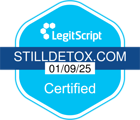What Is Shroom Chocolate?
Shroom chocolate is a psychoactive edible combining chocolate with psilocybin, the active compound in psychedelic mushrooms. Once consumed, psilocybin is metabolized into psilocin, which interacts with serotonin receptors in the brain—particularly those affecting mood, cognition, and perception. A 2020 study in Frontiers in Pharmacology found psilocybin alters brain connectivity, which helps explain its intense psychological effects1.
Despite its appealing form, shroom chocolate poses serious health risks. Without regulated dosing or standardized production, users may unknowingly ingest dangerously high amounts. This was tragically illustrated in the Diamond Shruumz incident, where contaminated products caused multiple hospitalizations and deaths.
A single piece may cause mild visual changes or lead to overwhelming disorientation, depending on variables like mushroom strain, preparation method, and storage conditions.
Short-Term Effects of Shroom Chocolate
Effects typically begin within 20 to 90 minutes, peaking around two hours and lasting up to six, with higher doses extending the duration. A moderate dose—equivalent to 1–2 grams of dried mushrooms—can cause visual distortions, altered time perception, and emotional shifts. According to pharmacokinetic research2, these effects are shaped heavily by the user’s mindset and environment, often referred to as “set and setting.”
In calm settings, some users report introspection, vivid colors, and emotional clarity. In overstimulating environments or with high doses, however, symptoms may include paranoia, panic, nausea, increased heart rate, tremors, and impaired judgment—raising the risk of accidents or harmful decisions3.
Side Effects of Shroom Chocolate
Common side effects include nausea, dizziness, fatigue, and emotional fluctuations. Some users may experience derealization or paranoia, especially in unfamiliar or stressful environments. A 2020 review in Therapeutic Advances in Psychopharmacology reported that first-time users are especially vulnerable to adverse reactions4.
In rare cases, high doses or underlying mental health conditions can lead to psychotic symptoms, including vivid hallucinations and intrusive thoughts. When mixed with alcohol or certain medications—such as SSRIs—users risk developing serotonin syndrome, a potentially life-threatening condition.
Long-Term Effects of Shroom Chocolate
While not physically addictive, repeated use of shroom chocolate can result in psychological dependence. A 2023 analysis in the Journal of Psychopharmacology noted increased mental health risks for regular users, including heightened anxiety and depressive symptoms5.
Some users develop Hallucinogen Persisting Perception Disorder (HPPD), where visual distortions continue long after use. Others may experience flashbacks or emotional instability that interferes with daily functioning. Chronic use may also alter serotonin regulation, affecting mood and focus.
How Long Do the Effects Last?
On average, psilocybin effects begin within 30–60 minutes, peak between two to three hours, and fade within six to eight hours, depending on dose and metabolism2. Some users experience residual emotional or cognitive symptoms, such as fatigue or mild confusion, lasting into the following day.
Regular use may amplify these aftereffects, leading to increased cravings or emotional dependency. Techniques like grounding exercises and journaling can support post-trip recovery.
Effects on the Body
Shroom chocolate primarily affects the brain, but also influences the cardiovascular and digestive systems. It increases activity in areas regulating emotion and sensory input1. Heart rate and blood pressure may rise, which is especially dangerous for individuals with heart conditions. Nausea, stomach cramps, and muscle weakness are common, and visual distortions may impair coordination.
These effects can continue into the next day, leaving users feeling drained or physically unsteady.
Recovery and Support at Still Detox
At Still Detox, we provide individualized care for those affected by psilocybin misuse. Our licensed clinicians use evidence-based methods, including cognitive behavioral therapy, trauma-informed care, and mindfulness-based strategies. Nutrition, fitness, and peer support are also integrated into each treatment plan. A 2022 American College of Sports Medicine report supports this holistic approach to mental health recovery6.
Recovery may begin with a shift in perspective—recognizing the underlying reasons for use and replacing harmful habits with healthier alternatives. We offer a judgment-free space to rebuild self-awareness and resilience.
Take Action with Still Detox
If you or a loved one is struggling with the effects of shroom chocolate, help is available. Contact our Florida-based team at Still Detox to begin a personalized recovery plan. Call (561) 556-2677 and take the first step toward healing.
References
- Neural Mechanisms of Psilocybin – Frontiers in Pharmacology, 2020.
- Pharmacokinetics of Psilocybin in Humans – National Library of Medicine, 2020.
- Substance Use and Mental Health Impacts – SAMHSA, 2024.
- Adverse Effects of Psilocybin – Therapeutic Advances in Psychopharmacology, 2020.
- Long-Term Risks of Psychedelics – Journal of Psychopharmacology, 2023.
- Integrative Approaches to Mental Health Recovery – American College of Sports Medicine, 2022.









